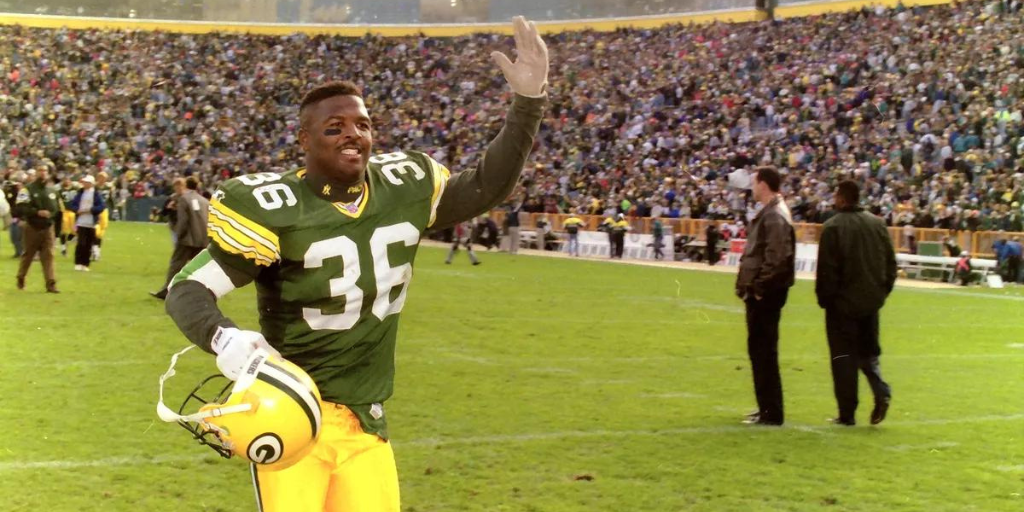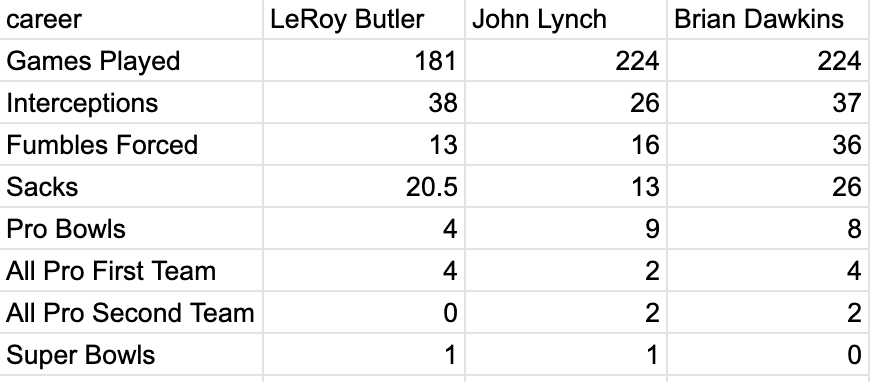Why Did LeRoy Butler Have to Wait to Make the Pro Football Hall of Fame?
LeRoy Butler is finally in the Pro Football Hall of Fame. His 16-year wait finally ended Saturday, correcting an error we first wrote about in 2017.
What took so long? Why did a guy now rightly recognized as an all-time great have to wait more than a decade to see himself formally recognized among the other legends of the NFL?
We’ll never really know the definitive answer, but we can get close to one by comparing Butler to one of the safeties who made it in before he did: John Lynch.
LeRoy Butler put up better stats than John Lynch
Looking purely at the numbers, Butler should have been in well before Lynch. Butler played 43 fewer games than Lynch — about two and a half full seasons — but consistently showed up around the ball more, recording more sacks and more interceptions than Lynch. The only “play on the ball” stat where Lynch beats him is fumbles forced, and he only managed three more in considerably more playing time.
Butler also has four first-team All-Pro nods to his name to just two for Lynch, though the latter did make the second team twice in addition to earning nine Pro Bowl nods to just four for Butler.
Still, the stats seem to paint Butler in a much better light and align quite well with Hall of Fame safety Brian Dawkins.
If you compare Butler and Lynch at similar ages, Butler really shines.
Butler was an immediate contributor, stepping into a role as a rookie at age 22, becoming a fixture in the starting lineup a year later, and playing virtually every snap of every game until his career ended due to injury at 33.
Lynch, meanwhile, didn’t become a full-time player until his age 25 season. He hung on longer than Butler did, but his age 34-36 seasons were statistically uninteresting, though they did earn him three Pro Bowl bids.
Comparing the two at the same ages, Butler’s dominance is again apparent. In five fewer games, he beats Lynch in the same statistical categories we used above.
So why didn’t Butler get the call until 16 years after he was eligible? The likely answer is right there in the name of the building.
Lynch cultivated a Hall of Fame profile
As we wrote in 2017, fame matters. It’s the Pro Football Hall of Fame, after all, not the Pro Football Hall of Stats. And Lynch, if nothing else, has been very good at cultivating fame.
Six days after announcing his retirement from professional football, Lynch debuted as a color commentator on FOX and held that position for a few years, growing the relationships that helped him land the San Francisco 49ers general manager job.
Butler, meanwhile, stayed local after his playing days. He makes media appearances with a few Wisconsin outlets, but it’s unlikely that you’ll ever see him on a national broadcast. Even if Hall of Fame voters say they don’t consider off-field stuff (a lie that Terrell Owens laid bare, but a lie that persists), that kind of thing matters. Lynch spent years after his playing career at or near the center of the NFL universe. Butler didn’t.
Butler also started behind the 8-ball, too. On a team with a three-time MVP in Brett Favre, a player many consider the best defender of all time in Reggie White, and a coach who, at the time, was the biggest name in the business in Mike Holmgren, Butler was never going to be the most famous guy on his own team. If that’s where you start and you don’t work to build your reputation after you’re done playing, well, chances are you might have to wait a little while to hear your name called when they’re handing out tickets to Football Olympus.



